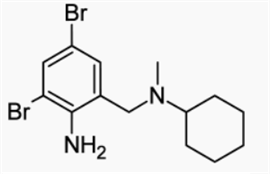Developing a Bromhexine HPLC method - Tips & Suggestions
June 20, 2014
/
/
/
/
/
/
/
/
/
I am currently using the following method for analysis of bromhexine. Which column and / or alternative method conditions can you suggest?
Mobile phase: 20:80 Potassium di-hydrogen phosphate buffer (Potassium di-hydrogen phosphate 1.0g, add 900ml DI water, then change pH to 7.0 with 0.5mol / L NaOH solution and dilution it to 1000ml with DI water ) / acetonitrile
Column temperature: 40°C
Detection: UV @ 245nm
In addition, phosphate buffers are not LCMS compatible, thereby limiting the scope of the method. Also phosphate buffers have been known to permanently alter the selectivity of HPLC columns. The mobile phase will also be simpler to prepare with an acid additive.

Cogent Bidentate C18 Ordering Information
Mobile phase: 20:80 Potassium di-hydrogen phosphate buffer (Potassium di-hydrogen phosphate 1.0g, add 900ml DI water, then change pH to 7.0 with 0.5mol / L NaOH solution and dilution it to 1000ml with DI water ) / acetonitrile
Column temperature: 40°C
Detection: UV @ 245nm
 Bromhexine Structure
Bromhexine Structure
In addition, phosphate buffers are not LCMS compatible, thereby limiting the scope of the method. Also phosphate buffers have been known to permanently alter the selectivity of HPLC columns. The mobile phase will also be simpler to prepare with an acid additive.

Cogent Bidentate C18 Ordering Information
